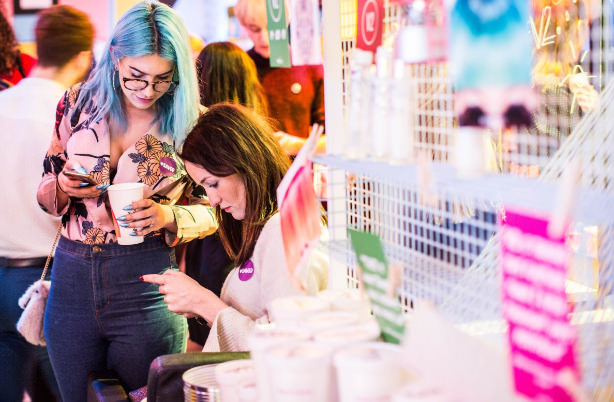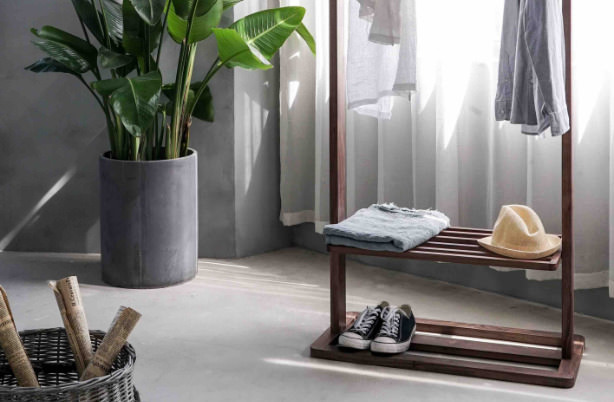Millennials
& Home Cleaning
In a recent study, mindswarms set out to understand unique generational considerations in how Millennial women relate to home cleaning, home cleaning brands, and home cleaning product purchasing. What we didn’t anticipate? That we’d open up a Pandora’s Box of emotionally deep insights. You can watch a video clip here.
Research Objective
To understand the emotions, pressures, and motivations related to household cleaning. By gaining a deeper understanding of the the modern young woman’s relationship to cleaning, we can better gauge what types of products and concepts would appeal most. One interesting technique we employed was to have women show us a photo of their Mom in the first response, to dial up the emotional intensity of their responses.
Target Audience
National US sample
12 states
14 cities
Ages 25 – 40
Female
Mix of ethnicities and socio-economic backgrounds
We Learned:
While we anticipated interesting results given the nature of the study and the research design, what we didn’t see coming was that the study became a form of mother/daughter therapy as told through the lens of home cleaning. Millennial women’s cleaning rituals, habits and schedules opened up a Pandora’s box of deep memories, providing a rich and emotionally colorful set of insights.
Here’s a look at how we set the stage for success by tuning the study design and triggers for the unique attributes of mobile video surveys.
The unique nature of mobile video studies
We’ve found that in mobile video surveys, respondents are remarkably open, honest, and candid in their replies. This may be because mobile phones – given how much they are used – serve as virtual extensions of the human hand. The device becomes quite personal and intimate in that respect. Additionally, we often use mobile devices to communicate in confidence with people we trust. So in a sense, the technology, by association, takes on attributes of a confidante: people are comfortable sharing openly with it.
Furthermore, as a market research methodology, mobile video surveys are highly effective for anything to do with the home. Participants often record their responses while at home, where they typically feel comfortable being themselves and where they are surrounded by belongings and items they use every day.
The compounded effect of using a familiar, personal technology in a familiar, personal environment makes the results of mobile video research studies highly insightful.

Applying ethnography best practices to mobile video study design
New technologies and media have opened up new ways to apply ethnography best practices with increasing sophistication and excellent results. The market research industry, driven to stay ahead of consumer preferences and trends, has rightly seen mobile video surveys as a way to overcome some limitations of traditional research approaches.
Take focus groups, for example. The sheer power of close observation, a highly insightful research practice, is largely absent from focus group research. Focus group observers are often situated such that it’s impossible to see the nuances of participants’ facial expressions from 10+ feet away. Depending on the seating arrangement, an observer might see some participants only in profile, making reading expression virtually impossible.
In contrast, a mobile video study is up close and personal, with the mobile device either held at arm’s length or in close proximity; so it offers a level of facial and body language observation that’s quite intimate, yet uncomplicated by interaction with an interviewer or other people.
Show & Tell is another ethnography methodology especially well suited for mobile video studies. Participants responding to Show & Tell prompts tend to be much more animated and articulate answering questions because they are either in the environment they are being questioned about or quite literally holding the object they are talking about.
Why did we survey only women?
While statistics show that men are a significant and growing audience for home cleaning products, we were experimenting with research design and especially curious about infusing a research study with the mother/daughter dynamic.
Mom knows that I take pride in the cleanliness of my home, and its organization, but it’s just never good enough for her.
~ Leslie Stone
UNORTHODOX STUDY DESIGN = POTENT RESULTS
We’ve worked as ethnographers in marketing, advertising, product design, strategy and consumer insights, and are still fascinated every day by the insights that emerge from the studies we do; from the standpoints of both study design and human thought and behavior. In this case, it was genuinely amazing to see study design, technology and human experience come together in such a powerful way.
Lesson #1: Engage emotion to reach deeper insights
STUDY DESIGN: Mommy and me; setting the stage
We decided to ask participating Millennial women to benchmark themselves against their mothers. “How do you compare to your mother?” From a study design standpoint—or from any standpoint, really—that’s a loaded question with some magical power:
- It sets a very emotional tone, starting with the first question.
- It provides a harder edge to the research findings because people are not just talking about themselves, they are talking about how they are different from their mothers.
- It provides a harder edge to the research findings because people are not just talking about themselves, they are talking about how they are different from their mothers.
- With this in mind, in the first clip of the study we asked participants to show us a picture of their mother (or parents), to help bring the mother/daughter or parent/daughter relationship vividly to mind in the moment. Loading a research study with a design that gets to deeper emotional territory will almost always result in more meaningful insights and set the stage for that emotion to carry through the rest of the study.
Understanding emotion is invaluable for a number of reasons:
- Despite what people SAY they will do, emotion often overrides logic
- There are so many options for consumers that understanding the emotional drivers for brand preference can be a powerful asset.
- While most categories—like home cleaning—have the potential to be mundane, we believe every category has emotion in it that can motivate consumers to buy specific products or brands that resonate with them.
- The most successful brands and companies typically create powerful emotional connections with consumers.
CONSUMER INSIGHTS: They are their mother’s daughters
Oh mama! Whether study participants remained adherents of their mother’s cleaning practices and philosophies, or whether they were outright rejectors of their mother’s way of doing things, they all had powerful emotional connections to home cleaning.
For many of respondents, their relationship to home cleaning started with early childhood memories of cleaning routines, scents, brands and products, all intertwined with their relationship with Mom.
As you might expect, many of the women adopted a very different set of brands from their mother’s loyalties. Typically, the brands Millennial women related to more had a different mission, vision, or purpose. They weren’t as much brands that had been around for generations, but they were brands with original narratives and associations that aligned more meaningfully with Millennials’ desire for a greater purpose or mission.
I think my mother would probably say, as far as my home cleaning products and home cleaning style goes, I’m doing the best I can with two little ones under the age of four. And I would say she understands the type of products that I buy and why I buy them. Organic products are just not what Mom chooses.
~ Julie
Lesson #2: Help participants paint a complete picture in full color
STUDY DESIGN: Transition from Culture/Category to Brand questions
We typically sequence questions in a way that helps participants show us if/how their relationship with the broader research topic aligns with the brand landscape. To achieve this, we start with broader topics about the culture and category, then narrow the focus to more specific product areas in order to approach the topic from a cultural level where the richest—and often highest ROI—insights are found.
In this study, we sequenced questions to follow this arc:
- Their relationship with home cleaning, relative to their mother’s
- Their relationship with home cleaning brands, relative to their mother’s
- Their relationship with home cleaning products, relative to their mother’s
- Their relationship with home cleaning purchasing, relative to their mother’s

CONSUMER INSIGHTS: A kinder, gentler brand landscape
Since Millennials tended on the whole to move away from brands their mothers groomed their daughters on, this can have significant impact on new brands launching, as well as on existing brands either repositioning themselves or extending into new areas.
From a product perspective, Millennial women tended to relate best to what we would refer to as “gentler” cleaning products. They cited products that had a less harsh chemical footprint and were perceived as more environmentally friendly. They also lit up at the idea of convenience. Wet wipes, for instance, were one of the most commonly cited products they lived by because of the ease with which they could be used. (Incidentally, respondents did not seem to associate that extra convenience with an increased environmental cost of the throw-away plastic tubs).
My number one home cleaning product would be my Windex Touch-Ups. I love this product. What makes this different from what my parents used? It’s convenient, the ease of use and the design: it’s kind of high-tech, I think, compared to an all-in vinegar mix that’s maybe something my parents would’ve concocted
~ Pamela
Lesson #4: Seek to understand the entire journey
STUDY DESIGN: Show & Tell methodology for product context
What’s a day in the life of a product? For product context, we had these women show us where they stored their cleaning supplies in the home, talk about the range of products found there, and discuss how they typically used the assortment of products.
By designing studies to investigate what happens to products pre, during and post use, mobile video surveys can help identify new opportunities for product marketers and designers to innovate around that product, including “product as service,” an escalating trend across categories. This is especially valuable in the re-order world, where increasingly popular subscription models help increase customer loyalty and lifetime customer value.
CONSUMER INSIGHTS: The untold story = new brand & product opportunities
By having participants show us their cleaning supplies, we were able to understand more deeply not only their favorite product(s), but also the brand clusters and assortments they purchased in other categories. It also gave us insight into their unmet needs when we could see, for example, how disorganized some of the supply areas were; many participants were reluctant to even show those areas because they felt embarrassed by the mess.
Would these participants want a product or system that made it easier for them to create and maintain a supply area they wouldn’t hesitate to show us or Mom? Absolutely.
I think my mom and my parents would say that I do keep my house in good clean state, but she would definitely be appalled by the number of different products that I have. She would say, it’s way too much and I should just stick to the old fashioned water and baking soda.
~ Grace
Lesson #5: Use mobile for an intimate, very human point of view
STUDY DESIGN: Get into their personal space, literally and emotionally
Seeing into people’s natural environments using mobile video surveys is a unique way to truly understand their world from their point of view—not just product or product context, but what else matters to them and the kinds of challenges they face every day.
Additionally, not only does the research methodology address the core research objective, it’s also valuable and easy to share throughout an organization, both upstream (into Product Design & Development, or even R&D) or downstream (into retail presentation and online buying).
So the Swiffer Dust and Shine with Febreze Lavender and Vanilla is my favorite cleaning product. […] It definitely differs from my parents, because they never had these things back in the day growing up, when cleaning, I think things were much more old-school.
~ Shaun
CONSUMER INSIGHTS: Under the sink can be as emotional as in their closet
Having consumers show you spaces in their homes that very few people ever see—like under kitchen counters and in laundry rooms—opens them up to share unexpected stories and details.It also opens the eyes of the researcher to the reality of these spaces.
Hearing in someone’s voice the pride about how she organized an area or seeing the anxiety on another’s face as she introduces a space in her home that’s chronically disorganized reveals all sorts of explicit and implicit insights.

EFFECTIVE USE OF MOBILE VIDEO STUDIES
Would participants have been so candid in a focus group or even in a filmed one-on-one, ethnographic-style interview? Unlikely. Certainly not without considerably more time invested in building rapport and trust.
In this study, each person’s familiarity with—and trust of—her mobile device led to surprisingly candid sharing. There was no unconscious bias, and no group think.
Specifically, using mobile video surveys in this study helped us:
- Understand the prevailing attitudes, practices, brand affinities, and purchase habits of Millennial women as it related to home cleaning and home cleaning products;
- Infuse the study with emotion beyond simply asking women about their habits and preferences;Identify clear attitudinal, behavioral, and emotional differences between Millennial women and their mothers;
- Surface the broader shifts amongst Millennials and the home cleaning category towards simpler, less harsh, and more convenient products;
- Identify all sorts of opportunities for new brands to disrupt the category and/or for existing brands to re-tool, re-position, or extend their brands;
- Explore zones of innovation in which both new and established brands can identify opportunities for new services and experiences on top of the existing product portfolio, such as organizing ecosystems for storage, re-supply purchasing, and line extensions into tangential categories
ACKNOWLEDGMENTS
Special thanks to the people who shared their personal stories and insights with us as part of this mindswarms study.